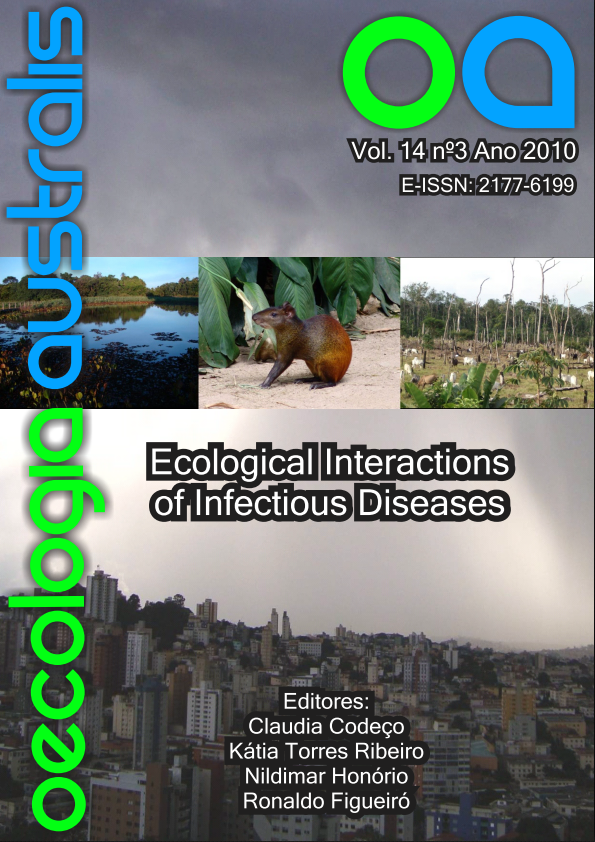DENGUE AND LAND COVER HETEROGENEITY IN RIO DE JANEIRO
Keywords:
Dengue, Rio de Janeiro, urban ecosystem.Abstract
Dengue epidemics in Brazil have become more frequent and more severe and involving larger populations in the last years. In Brazil Aedes aegypti is the only known vector. During the 2007--2008 period, Rio de Janeiro state experienced the most severe dengue epidemics ever reported in terms of morbidity and mortality. During this period, 322,371 cases and 240 deaths were registered, with 100 deaths due to dengue haemorragic fever/ dengue shock syndrome and 140 due to other dengue-related complications. Dengue transmission is influenced by closely related factors, many of which directly associated to the environment. Every city has its own specificities that are mainly given by its landscape and human populations. Rio de Janeiro is a city of 6 million individuals who share a heterogeneous space of ~1,200km2. Human population density ranges from 5,000 inhabitants/km2 average mainly in the lowlands, with slums (or favelas) mainly in the slopes, where densities reach ~40,000 inhabitants/km2. These 6 million individuals live in highly urbanized, medium-urbanized and peri-urban transition zones with pockets of rural and semi--rural areas surrounded by the expanding city, mostly in the lowlands interspersed by three mountain complexes. To analyze the heterogeneous space of the city of Rio de Janeiro in relation to dengue, neighborhoods land cover maps where juxtaposed to dengue georeferenced cases, during the epidemic period 2007-2008. This analysis resulted in the observation of spatial clusters of high incidence dengue cases (hotspots) in 7 areas, namely, Jacarepaguá, Downtown, Island, Guaratiba, Northern, Western and Pedra. The most important cluster was constituted by the Jacarepaguá lowland urban ecosystem. Do the different urban ecosystems differ epidemiologically in terms of when and how dengue is transmitted? In Rio de Janeiro, is there a dengue of highly urbanized areas, a dengue of medium urbanized areas and a dengue of medium-high vegetated areas? Or in all those different urban ecosystems there is a shared characteristic that favor dengue transmission? Even though further studies should be conducted taking other aspects into account, the present study indicates that the different urban ecosystems observed might influence dengue transmission in Rio de Janeiro.


